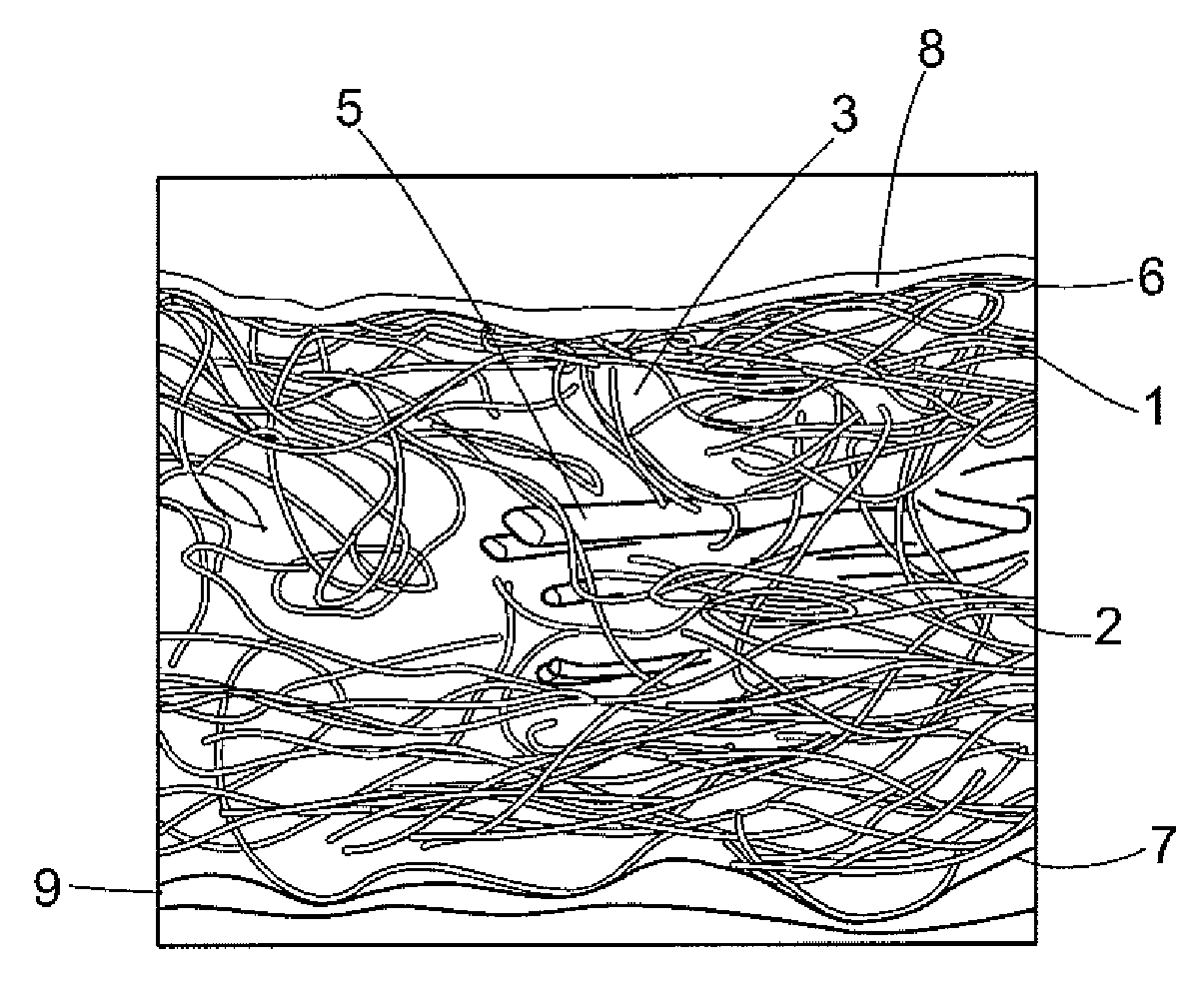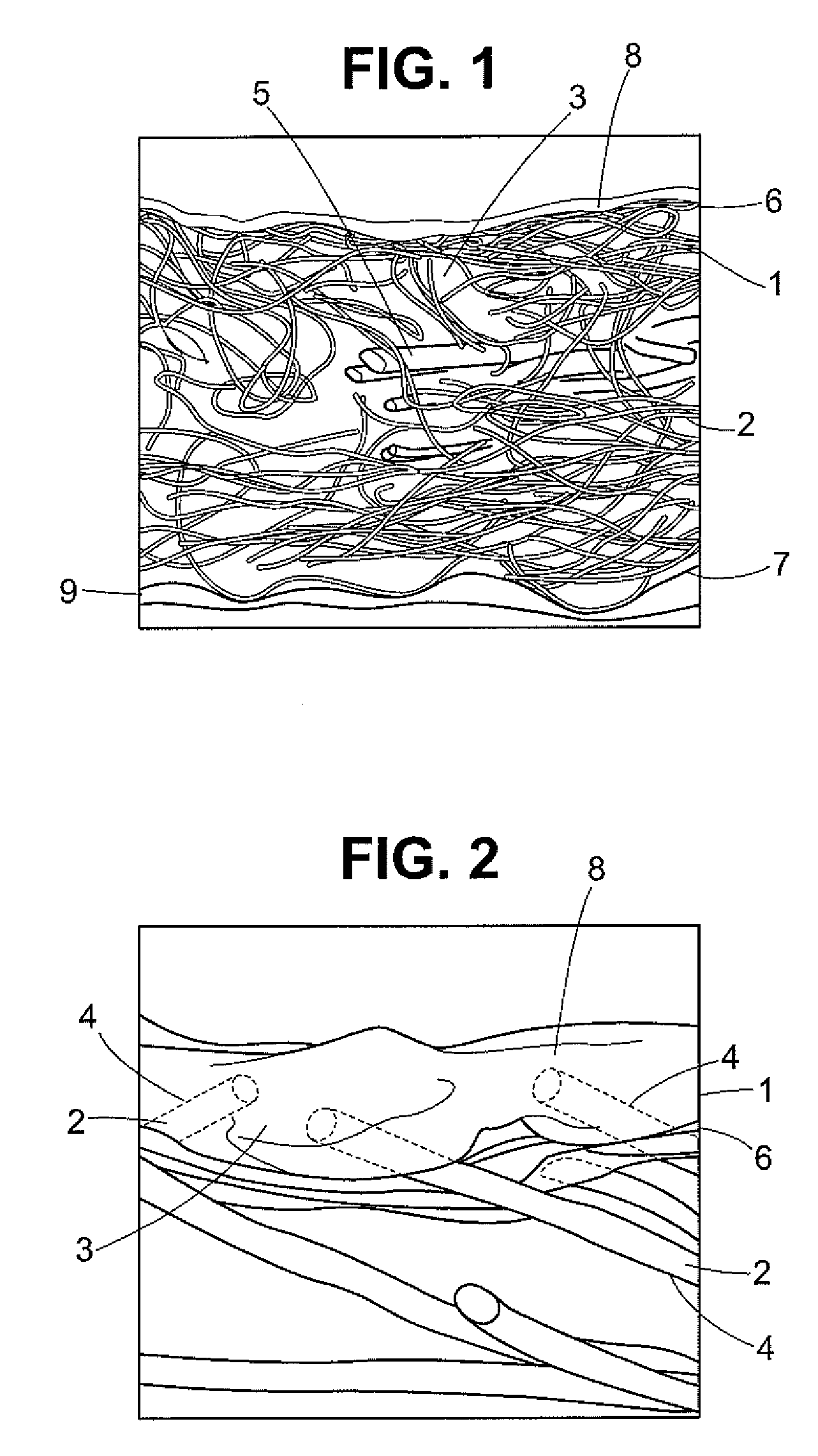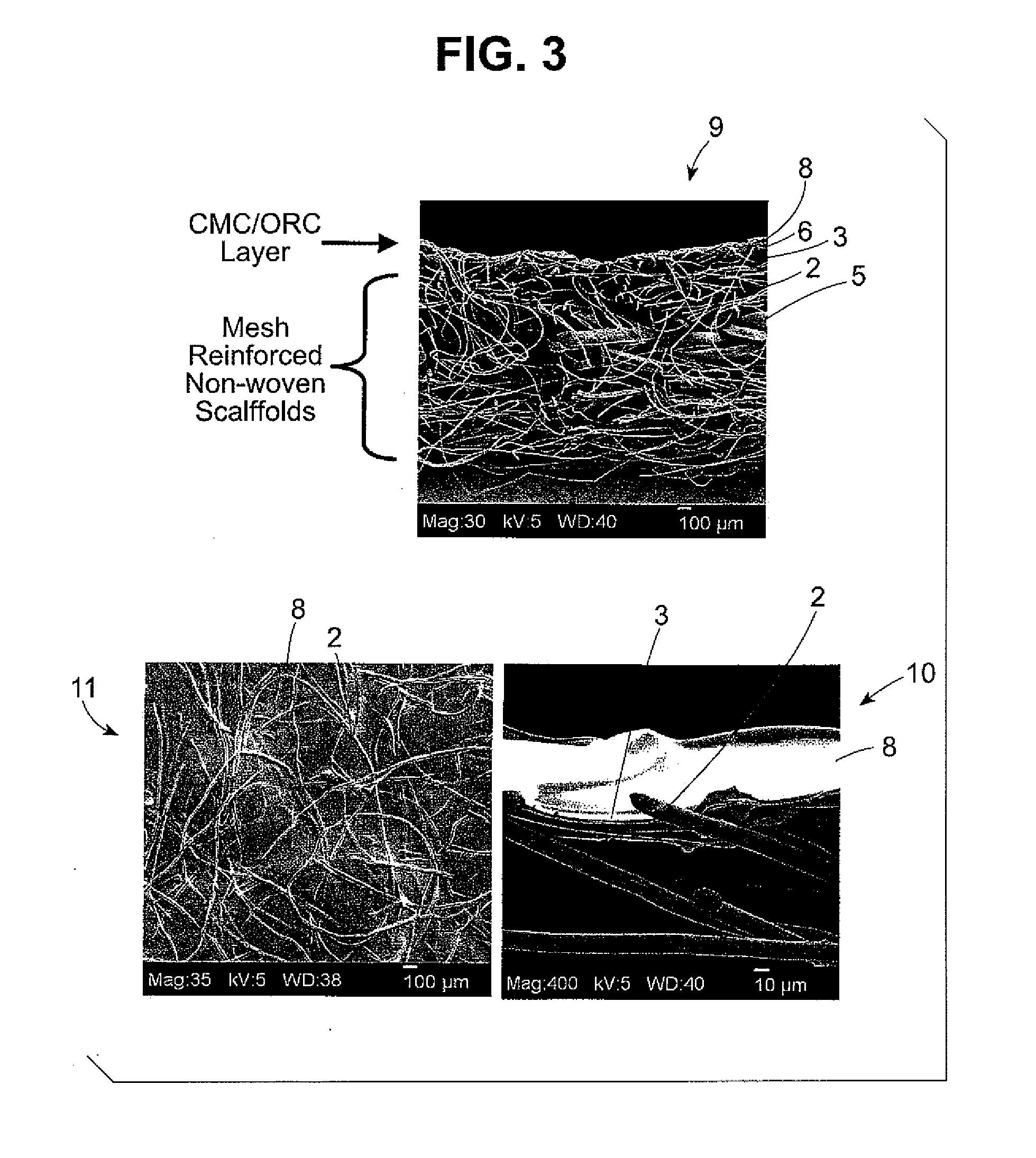Coated Tissue Engineering Scaffold
a tissue engineering and scaffold technology, applied in the field of tissue repair and regeneration and devices, can solve the problems of abdominal wall damage, potentially serious medical condition, inside layers of abdominal wall weaken then bulge or tear,
- Summary
- Abstract
- Description
- Claims
- Application Information
AI Technical Summary
Benefits of technology
Problems solved by technology
Method used
Image
Examples
example 1
Fabrication of Mesh Reinforced Non-Woven Scaffolds
[0038]Mesh reinforced 90 / 10 poly(glycolide-co-lactide) (PGA / PLA) non-woven scaffolds were fabricated. Polypropylene / poliglecaprone-25 mesh sold under the tradename ULTRAPRO (Ethicon) was used as the reinforcing constructs, while 90 / 10 PGA / PLA nonwoven felts (Ethicon) was the 3D fiber construct. The one nonwoven felt was placed on each side of the mesh and the structure was then needle punched to create the interlock of 90 / 10 PGA / PLA fibers of the felt with the mesh. The mesh reinforced scaffolds were 1.03 mm thick with a density of 71 mg / cc.
example 2
Fabrication of Mesh Reinforced Non-Woven Scaffolds with a Partially Penetrated Anti-Adhesion Barrier
[0039]Mesh reinforced scaffold prepared in Example 1 was coated on one side of the scaffold with a thin coating, i.e. layer or film, of anti-adhesion barrier comprising 1.5% (w / w) CMC and 0.5% (w / w) ORC with and without EDC crosslink. The coated device was prepared as follows. 1.5% (w / w) carboxymethylcellulose (type: 7HFPH, lot: 89726, Hercules, Inc., Wilmington, Del.) solution was first prepared by dissolving 1.5 grams of CMC in 100× grams of water at room temperature. 0.5 grams of oxidized regenerated cellulose (Ethicon) were then mixed into 100 ml CMC solution. A 5×6 cm2 mesh reinforced scaffold prepared in Example 1 was placed in a stainless steel stretch frame to provide a flat surface for coating. 3.3 grams of CMC / ORC mixture was spread evenly on one side of the scaffold. The coated scaffold was allowed to air dry overnight and was then cut evenly into two halves. One of the coa...
example 3
Fabrication of Biocompatible Bioabsorbable Mesh Reinforced Absorbable Non-Woven Scaffolds with a Partially Penetrated Anti-Adhesion Barrier
[0040]Bioabsorbable polydioxanone mesh reinforced 90 / 10 PGA / PLA non-woven scaffolds are fabricated. Polydioxanone meshes are used as the reinforcing constructs, while 90 / 10 PGA / PLA felts are the 3D fiber construct. The felts are placed on both sides of the mesh and the structure is then needle punched to create the interlock of 90 / 10 PGA / PLA fibers of the felts with the mesh. The Polydioxanone mesh reinforced scaffolds are 1.0 mm thick with a density of 70 mg / cc. The Polydioxanone mesh reinforced scaffolds are coated with the CMC / ORC anti-adhesion barrier following the process described in Example 2.
PUM
| Property | Measurement | Unit |
|---|---|---|
| thickness | aaaaa | aaaaa |
| depth of penetration | aaaaa | aaaaa |
| distance | aaaaa | aaaaa |
Abstract
Description
Claims
Application Information
 Login to View More
Login to View More - R&D
- Intellectual Property
- Life Sciences
- Materials
- Tech Scout
- Unparalleled Data Quality
- Higher Quality Content
- 60% Fewer Hallucinations
Browse by: Latest US Patents, China's latest patents, Technical Efficacy Thesaurus, Application Domain, Technology Topic, Popular Technical Reports.
© 2025 PatSnap. All rights reserved.Legal|Privacy policy|Modern Slavery Act Transparency Statement|Sitemap|About US| Contact US: help@patsnap.com



